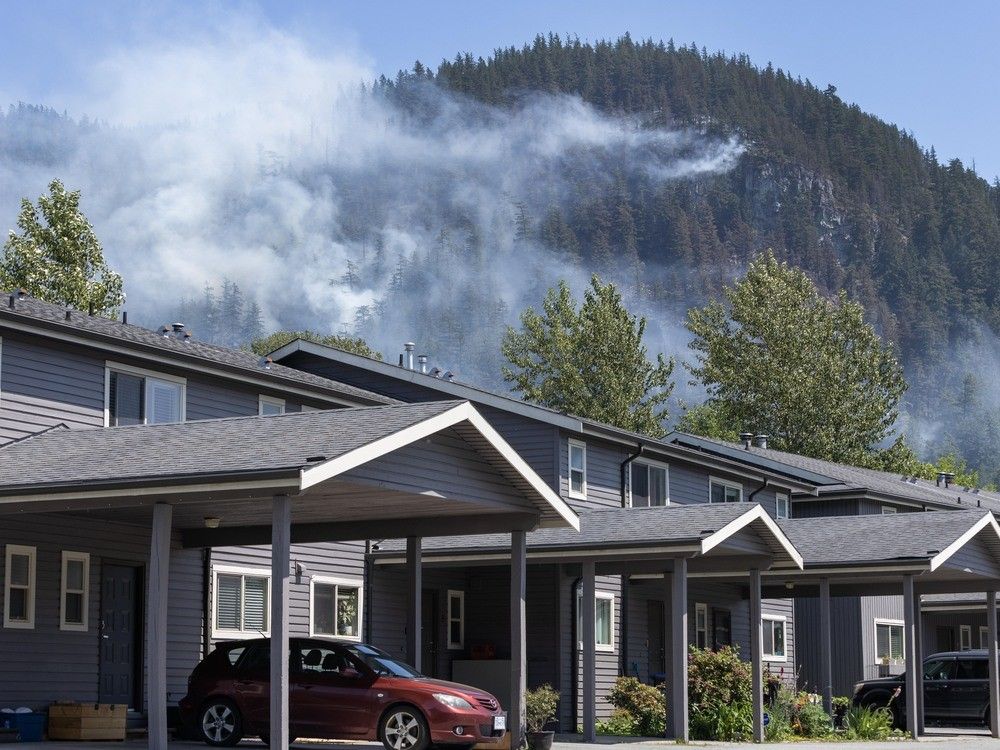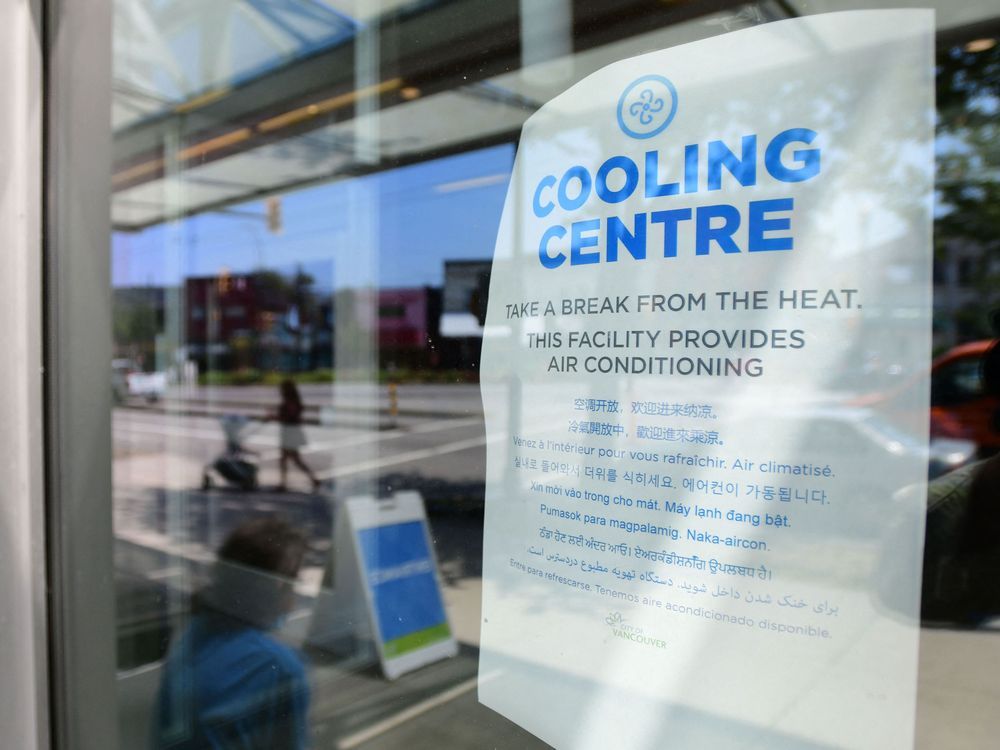
Here’s the latest news concerning climate change and biodiversity loss in B.C. and around the world, from the steps leaders are taking to address the problems, to all the up-to-date science.
Check back every Saturday for more climate and environmental news or sign up for our Climate Connected newsletter HERE.
In climate news this week:
• Firefighters battle out-of-control wildfires in Squamish and northeastern B.C.
• May was world’s second-hottest on record, EU scientists say
• More than a dozen heat records broken in B.C.’s first heat wave of the season
• Progress on deadly heat dome recommendations in B.C., but more work needed: advocates
Human activities like burning fossil fuels and farming livestock are the main drivers of climate change, according to the UN’s intergovernmental panel on climate change. This causes heat-trapping greenhouse gas levels in Earth’s atmosphere, increasing the planet’s surface temperature.
The panel, which is made up of scientists from around the world, including researchers from B.C., has warned for decades that wildfires and severe weather, such as the province’s deadly heat dome and catastrophic flooding in 2021, would become more frequent and intense because of the climate emergency. It has issued a code red for humanity and warns the window to limit warming to 1.5 C above pre-industrial times is closing.
According to NASA climate scientists, human activities have raised the atmosphere’s carbon dioxide content by 50 per cent in less than 200 years, and “there is unequivocal evidence that Earth is warming at an unprecedented rate.”
And it continues to rise. As of June 5, carbon dioxide in the atmosphere has risen to 430.51 parts per million, up from 429.64 ppm last month and 427.09 ppm in March, according to NOAA data measured at the Mauna Loa Observatory, a global atmosphere monitoring lab in Hawaii. The NOAA notes there has been a steady rise in CO2 from under 320 ppm in 1960.

Climate change quick facts:
• The Earth is now about 1.3 C warmer than it was in the 1800s.
• 2024 was hottest year on record globally, beating the record in 2023.
• The global average temperature in 2023 reached 1.48 C higher than the pre-industrial average, according to the EU’s Copernicus Climate Change Service. In 2024, it breached the 1.5 C threshold at 1.55 C.
• The past 10 years (2015-2024) are the 10 warmest on record.
• Human activities have raised atmospheric concentrations of CO2 by nearly 49 per cent above pre-industrial levels starting in 1850.
• The world is not on track to meet the Paris Agreement target to keep global temperature from exceeding 1.5 C above pre-industrial levels, the upper limit to avoid the worst fallout from climate change including sea level rise, and more intense drought, heat waves and wildfires.
• On the current path of carbon dioxide emissions, the temperature could increase by as much 3.6 C this century, according to the IPCC.
• In June 2025, global concentrations of carbon dioxide exceeded 430 parts per million, a record high.
• Emissions must drop 7.6 per cent per year from 2020 to 2030 to keep temperatures from exceeding 1.5 C and 2.7 per cent per year to stay below 2 C.
• There is global scientific consensus that the climate is warming and that humans are the cause.
(Source: United Nations IPCC, World Meteorological Organization, UNEP, NASA, climatedata.ca)
Latest News

May was world’s second-hottest on record, EU scientists say
The world experienced its second-warmest May since records began this year, a month in which climate change fuelled a record-breaking heat wave in Greenland, scientists said on Wednesday.
Last month was Earth’s second-warmest May on record – exceeded only by May 2024 – rounding out the Northern Hemisphere’s second-hottest March-May spring on record, the EU’s Copernicus Climate Change Service said in a monthly bulletin.
Global surface temperatures last month averaged 1.4 C higher than in the 1850-1900 pre-industrial period, when humans began burning fossil fuels on an industrial scale, the service said.
That broke a run of extraordinary heat, in which 21 of the last 22 months had an average global temperature exceeding 1.5C above pre-industrial times – although scientists warned this break was unlikely to last.
“Whilst this may offer a brief respite for the planet, we do expect the 1.5 C threshold to be exceeded again in the near future due to the continued warming of the climate system,” said service director Carlo Buontempo.
—Reuters

Progress on deadly heat dome recommendations in B.C., but more work needed: advocates
As B.C. confronts another extreme temperature summer, the province has exhausted funding from its $30-million, free, portable, air-condition unit program after delivering more than 27,000 units to those most in need.
Providing air conditioning to the vulnerable was one of the recommendations from a B.C. coroner’s review of the 2021 heat dome that killed 619 people.
Provincial officials said the program had been shut down to applications on an income basis while people with health issues can still access free AC units with a referral through their health authority. But advocates say it’s not enough — and the province must put the onus on landlords to ensure temperatures in rental units don’t get too hot.
Lasse Hvitved, a lawyer with the Vancouver-based Tenant Resource and Advisory Centre, said the province’s free AC unit program has been helpful but called it a Band-Aid solution. The use of portable AC units isn’t the most efficient approach, and a better method would be to install central cooling, shade buildings with trees and paint buildings in colours that reflect heat, said Hvitved.
What is needed is to put the responsibility on landlords to keep temperatures below a certain maximum, similar to what is required for minimum temperatures in Vancouver.
—Gordon Hoekstra
Squamish reports progress in fire fight, as northeast B.C. hopes for rain
A fire that has been burning out of control as it threatened Squamish this week is expected to be declared “held” in the next couple days, a spokesman with the B.C. Wildfire Service said Friday.
Rory Baldwin told a news briefing that crews expected good progress this weekend thanks to favourable weather, while Squamish Mayor Armand Hurford said rain on Thursday night had prompted celebrations on the streets.
The blaze — which triggered a local state of emergency and closure of a provincial park — was 60 hectares in size, with Hurford attributing an increase to improved mapping.
“It’s been a long week,” Hurford told the briefing Friday, while noting that the community that’s halfway between Vancouver and Whistler usually sees a lot of traffic and visitors over the weekend.
Hurford said he’d heard of people wanting to return to closed trails, but it was not safe to “push the limits.”
“We want visitors to be mindful of the extensive emergency response that’s underway,” he said.
The Squamish Fire Rescue chief, Aaron Foote, told the briefing that extra groundcrews and another helicopter had arrived to help the fight. The district had earlier said on social media that a Black Hawk helicopter would be helping the aerial fleet drop water on the flames.
—The Canadian Press

More than a dozen heat records broken in B.C.’s first heat wave of the season
B.C.’s first heat wave of the season toppled daily records in more than a dozen communities on Sunday.
Several records were set as large swaths of the province baked under unseasonably hot temperatures nearing 40 C in parts of the province.
According to Environment Canada’s preliminary data, Lytton was the province’s hot spot, with the temperature hitting 39.3 C, breaking the record of 38.5 C set two years ago.
Kamloops also set a record of 37 C, as did Cache Creek with 38.6 C, both beating records set in 2023.
In Abbotsford, temperatures hit 31 C, a degree higher than the previous record set on June 8, 1955.
Pitt Meadows also had a record-setting scorcher of a day, with a high of 32.3 C, breaking the old record of 31.7 C set in 1903. The Sea to Sky region also set temperature records, including in Whistler at 31.9 C, Squamish at 31.6 C, and Pemberton at 36.7 C.
Records were also broken in Chetwynd, Clinton, the Malahat area, Nanaimo, Princeton, Qualicum Beach and Williams Lake.
—Cheryl Chan
Trump EPA moves to repeal climate rules that limit greenhouse gas emissions from US power plants
The Environmental Protection Agency on Wednesday proposed repealing rules that limit planet-warming greenhouse gas emissions from power plants fuelled by coal and natural gas, an action that Administrator Lee Zeldin said would remove billions of dollars in costs for industry and help “unleash” American energy.
The EPA also proposed weakening a regulation that requires power plants to reduce emissions of Mercury and other toxic pollutants that can harm the brain development of young children and contribute to heart attacks and other health problems in adults.
The rollbacks are meant to fulfil Republican President Donald Trump’s repeated pledge to “ unleash American energy ” and make it more affordable for Americans to power their homes and operate businesses.
If approved and made final, the plans would reverse efforts by Democratic President Joe Biden’s administration to address climate change and improve conditions in areas heavily burdened by industrial pollution, mostly in low-income and majority Black or Hispanic communities.
—The Associated Press

High Seas Treaty gains momentum as 18 new countries pledge support
Eighteen countries ratified the High Seas Treaty on Monday, bringing the total to 49 — just 11 short of the 60 needed for the ocean agreement to enter into force. The surge in support, occurring during the U.N. Ocean Conference in Nice, France, adds momentum to what could become a historic shift in how the world governs the open ocean.
“The entry into force is within our sight, and I call on all remaining nations to join swiftly,” U.N. Secretary-General António Guterres told reporters Tuesday. “We do not have a moment to lose.”
Here’s what the treaty is, why it matters and what happens next.
Formally known as the Agreement on Biodiversity Beyond National Jurisdiction, the High Seas Treaty is the first legally binding agreement focused on protecting marine biodiversity in international waters. These waters, which are beyond the jurisdiction of any single country, make up nearly two-thirds of the ocean and almost half the surface of the planet.
Until now, there has been no comprehensive legal framework to create marine protected areas or enforce conservation on the high seas.
—The Associated Press

Fitch warns of rising mortgage-bond risk due to extreme weather
For analysts at Fitch Ratings, the recent demolition of a Swiss village by a glacier is fresh proof that climate change is altering the laws of mortgage risk.
The world looked on in shock last month as three million cubic meters of rock and mud buried the Swiss village of Blatten.
The Alps are already about 2 C hotter than they were at the time of the Industrial Revolution, meaning glaciers are continuing to thaw at a dangerous pace. And with global warming currently on track to be roughly double the critical threshold of 1.5, scientists warn that the risk of property damage caused by floods, mudslides, fires and storms is growing by the day.
“We expect physical climate events to happen more frequently and with more intensity,” Will Rossiter, a director of enhanced analytics at Fitch, said in an interview. And “the impact that they’re having on a greater number of assets within a portfolio could increase.”
Against that backdrop, Fitch is now in the process of integrating physical climate risks into credit assessments. The move reflects an evolving concern among ratings firms and regulators alike that climate change is hitting the mortgage market — and the bonds that finance it — in ways that have yet to be adequately reflected in valuations. What happened in Switzerland should serve as a reminder that when climate shocks hit, their impact can be devastating, Rossiter said.
—Bloomberg News